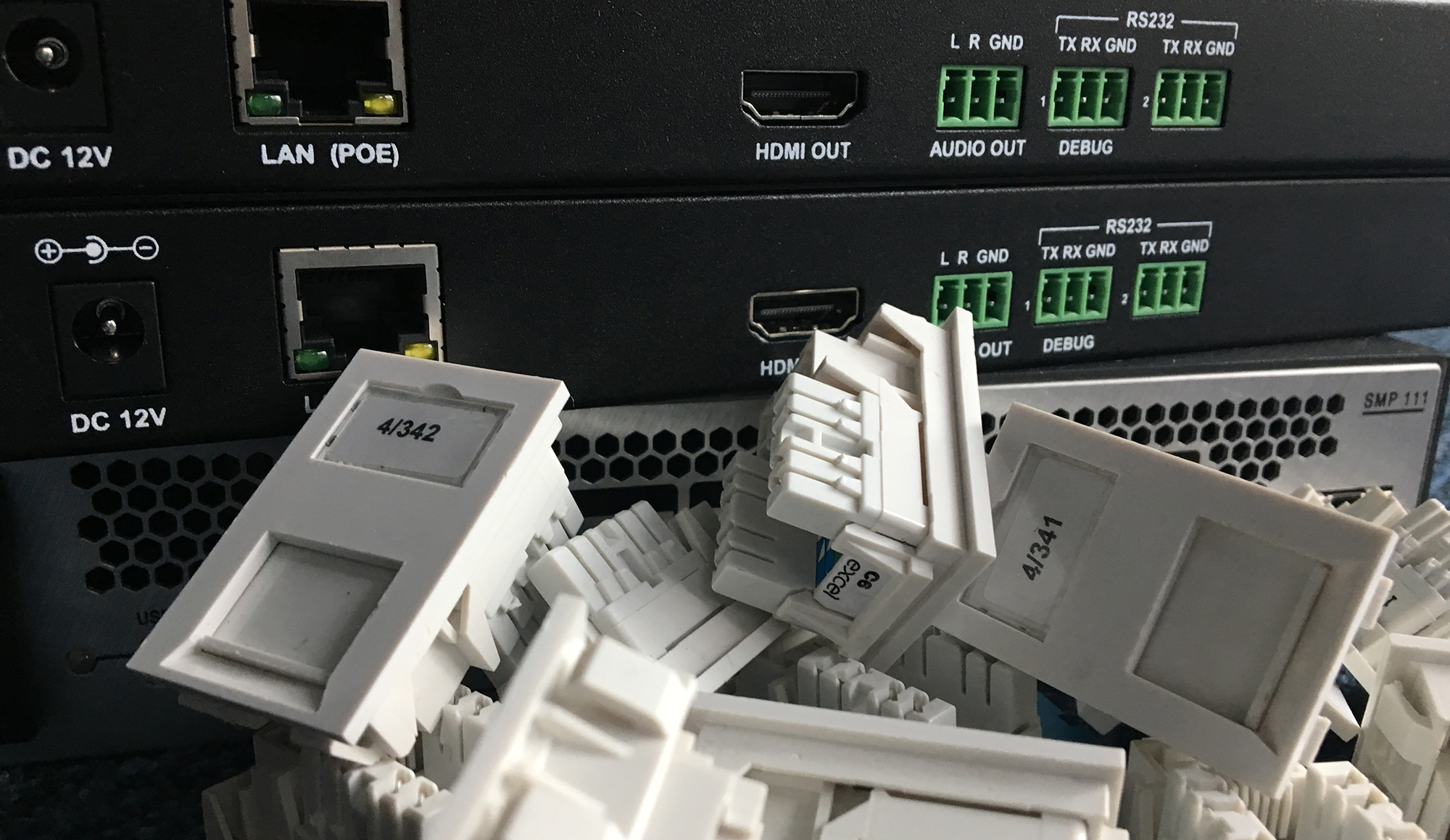AVoIP – or Audio Visual over Internet Protocol – has been in the AV lexicon for a few years now as the industry has continued its convergence with IT. Although it can be a complex area to fully understand its advantages are clear, offering cost-effective, flexible, and scalable solutions, so it’s worth investigating if this could be the right approach for your needs.
What is AVoIP?
So, let’s start at the beginning. What is AVoIP? Put simply, AVoIP is the transmission of audio, video, and control signals over any IP infrastructure such as a WAN, LAN, or 5G wireless. Unlike traditional analogue AV environments, AVoIP uses standard network equipment to switch and transmit video and audio signals, meaning it can use existing CAT5e cabling rather than requiring extensive new cable, avoiding the disruption and cost this can bring.
Advantages of AVoIP
This, along with the fact that AV over IP devices are fairly commonplace in the marketplace and don’t require complex programming, means the initial investment is quite low to deliver a working solution.
Another advantage is speed and flexibility of deployment – despite being powerful encoders and decoders, most AV over IP equipment can be powered by the network meaning a source can be displayed in any room by taking a receiver in, plugging it into the network, and connecting a display. Physical cables no longer need to be moved to accommodate changes, and systems can be easily managed via software, resulting in a much more adaptable and intuitive setup, particularly across large estates. This much simplifies the dissemination of real-time content via digital signage for example, combining 4K video, text, wayfinding, and much more that can be useful in every environment from education and corporate to health and retail.
Of course, carrying large amounts of images or video files over a LAN infrastructure may initially be a concern and, depending on the use case, AVoIP applications may be better segregated from the IT network, otherwise, application of Quality of Service (QoS) and other network management protocols can result in the end-user experience deteriorating. This is unlikely to be a major issue, however specifying a separate network is often a good compromise to ensure both AV and IT teams are confident in their setups while user experience remains at an optimum level.
Having said that, for maximum value for money and control, it is commonplace for AV over IP devices to share the network with IT equipment, albeit on separate VLANs. When the traffic is appropriately managed, devices are configured in an optimal way, and the AV and network teams collaborate, there is no reason why this approach should result in anything other than an outstanding user experience provided capacity and network routes have been considered to avoid the network becoming a bottleneck.

What are the security implications of AVoIP?
As in so many areas of AV, security is an often-discussed topic, especially among corporates who are keen to present sensitive content in meeting rooms without worrying that third parties can intercept or interfere with the data while it is being sent over the network.
Fortunately, most AV over IP equipment is based around the HDMI standard for video input and so relies on the industry-standard HDCP protocol for security. This protects the stream from being decrypted in transit by a savvy user with access to the network traffic itself. Other protocols such as Dante are catching up, with many devices on the network also supporting encryption for this format as well.
In addition, the point-to-point stream will be further encrypted by a passphrase or key that the administrator is able to change, which further protects it from being intercepted.
When should I opt for AVoIP?
Now we know what AVoIP is and the benefits it brings, when should we use it? AVoIP is particularly well-suited to switching applications over 4×4, where the low cost and commodity nature of the devices make them suitable for distributing signals. In addition, if a matrix switcher were to fail, the whole device is offline, whereas the failure of an AV over IP device in a matrix setting will only affect one source or destination.
Other suitable spaces include large-scale video distribution throughout an office, building, conference facility or campus, especially where control over which source goes to which destination is required; divisible spaces where the room needs to be able to flexibly reconfigure based on the position of walls; and control room applications where HD or 4K displays need to share multiple sources, and where flexible layouts are needed. Scenarios where LAN and WAN streaming are required with the same source.
It is less suited to small-scale applications and single room setups with a few sources and sinks, as well as broadcast-type environments where SDI sources with time-sync are required, or there are proprietary video protocols to integrate, such as video conference codecs. In this case, speak to your integrator who will be able to advise on alternatives such as HDBaseT, which may be a better option.
Conclusion
The explosion of new devices, protocols, and companies providing AV over IP in recent years is no surprise and should be welcomed by integrators, customers and distributors alike. Usage is certainly growing – we’re seeing new buildings, university campuses, and whole conference spaces being specified with an AV over IP solution – and with the many benefits it brings, this doesn’t look set to change any time soon.
